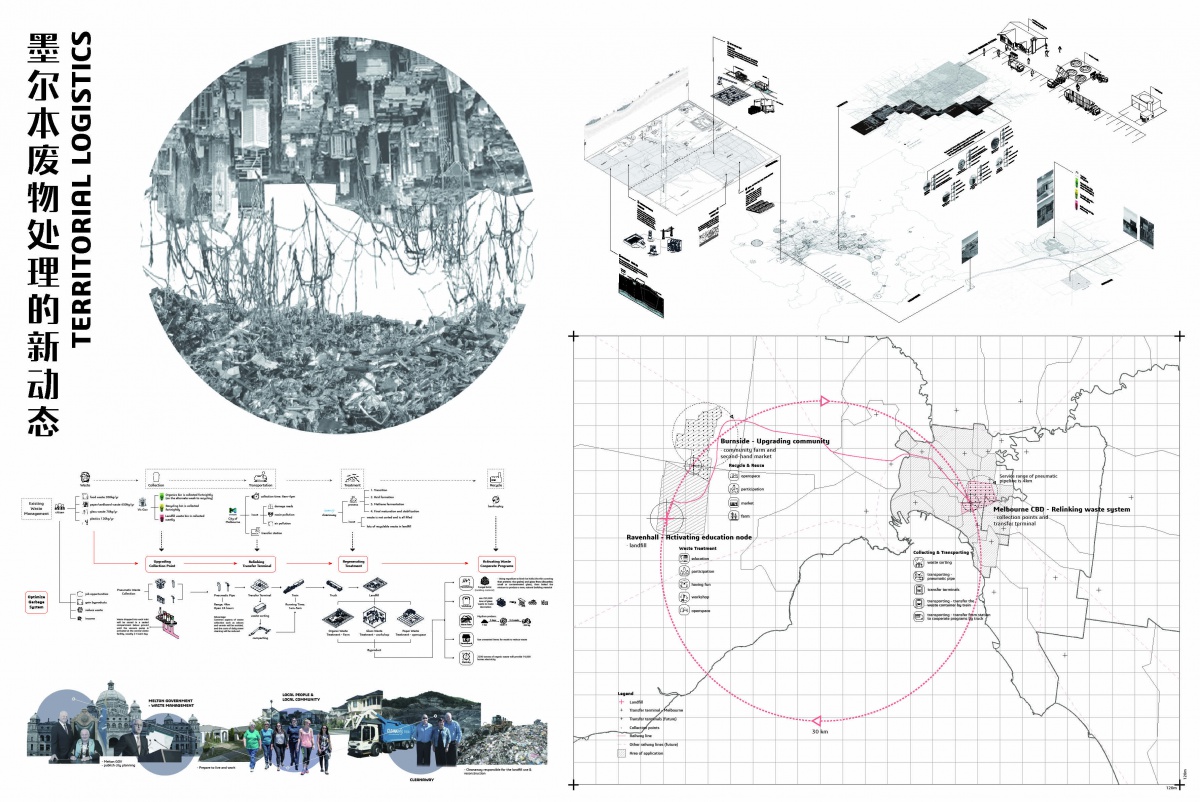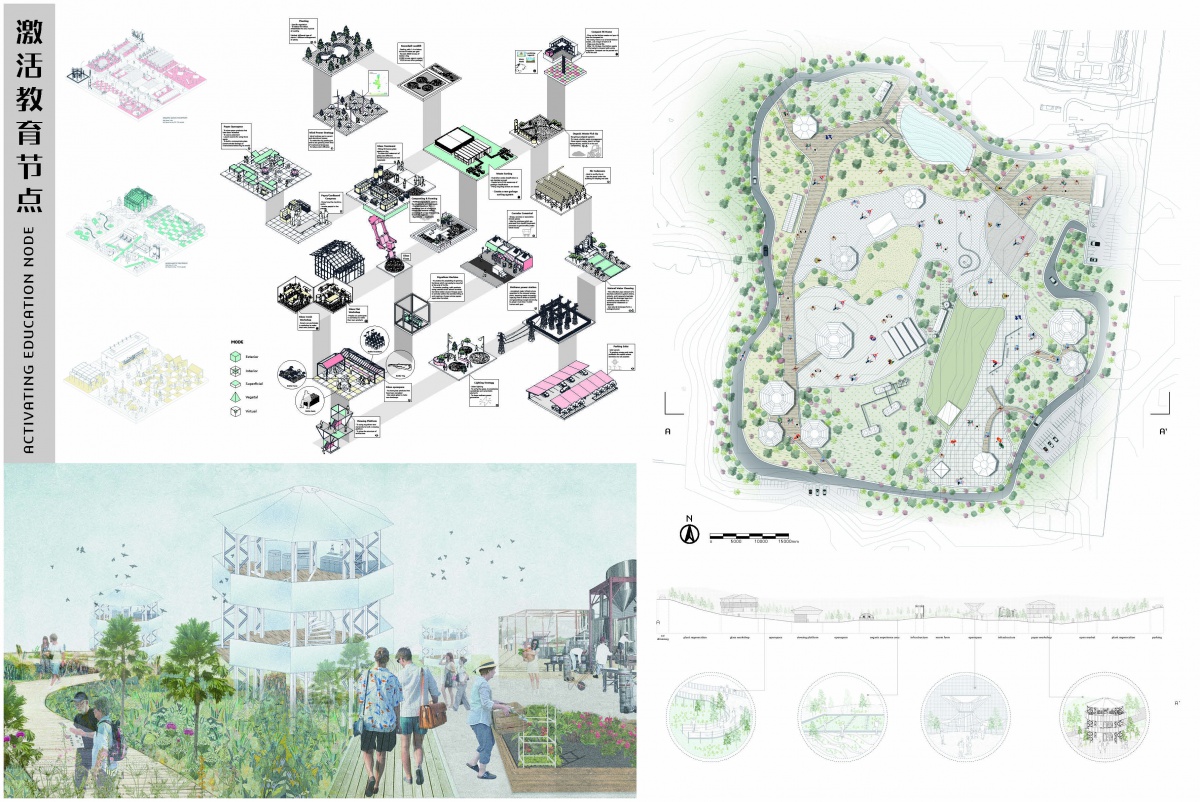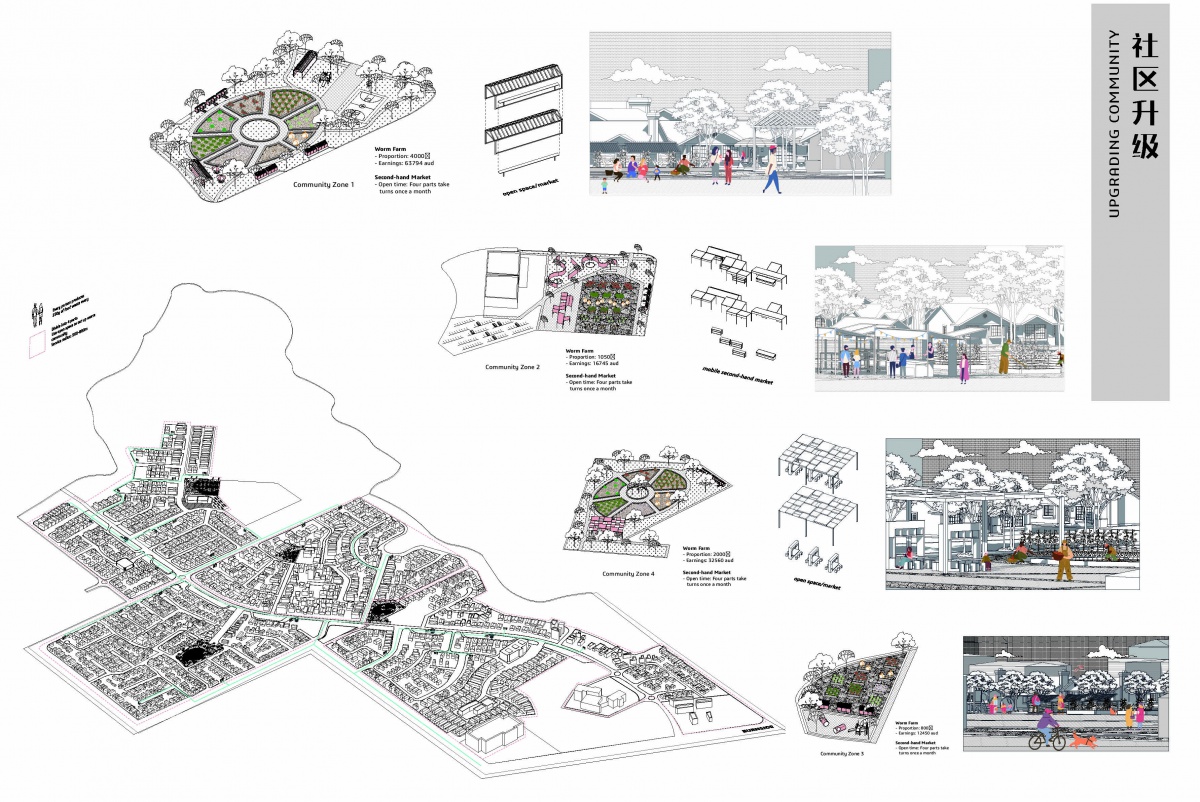墨尔本废物处理的新动态
作品编号:ILIA-S-20208181
主创姓名:林丹怡
设计成员:无
申报类别:方案设计 - 城乡公共空间
项目名称:墨尔本废物处理的新动态
院校名称:墨尔本皇家理工大学Royal Melbourne Institute of Technol
指导老师:Martin Woodbine Zoe Loomes
设计时间:2019-03-07
项目地点:墨尔本
项目规模:城市
项目类别:方案设计-城乡公共空间
设计说明
‘TERRITORIAL LOGISTICS’ presents a critical understanding of the waste management in Melbourne. It examines how process of garbage can serve as a new logistical network for promoting urbanization. Logistical networks are so integral to the functioning of global waste management that they have essentially reconfigured the life way we live. China was the largest garbage receptor from Australia, when the Chinese government issued a ban on the import of foreign waste in 2018, Australia lost the largest waste market and start to look for new ways to garbage. Accompanied with the bankruptcy of recycling plants, a numerous amount of waste is faced with “homelessness”. This project studied the existing waste management processes in Melbourne and UN-GOAL 12 and 13, proposing three strategic interventions including reconnecting waste collection and transport, recycling waste disposal, and launching waste cooperation projects, which allow efficient transport, efficient management of public natural resources, improved waste disposal practices, and a significant reduction in waste generation. While the sites of the three main stages, the whole of Melbourne, to the landfill, ultimately Burnside community scale, tests a logistical scenario with waste management affiliated infrastructure and demonstrates the feasibility and attendant achievements of rethinking waste management practices. This project also offer lessons to the broader Melbourne, and even Australian context.

Melbourne waste plan
The vision of a series of collection facilities and pneumatic pipes spread across the districts of Melbourne challenges the way infrastructure is planned and designed, opening a dialogue on how a city should transform its infrastructural systems to adapt to future challenges. The vision of a series of collection facilities and pneumatic pipes spread across the districts of Melbourne challenges the way infrastructure is planned and designed, opening a dialogue on how a city should transform its infrastructural systems to adapt to future challenges. Moreover, the relationships between showing the dynamic process of landfill for the public and community openspaces for community garden and second-hand market and the city by the force of juxtaposition, making connections between the apparently disparate aspects of urban life to establish a more tangible and accessible opportunity for urban dwellers, as well as the government and local businesses to become more involved in waste issues. Just as the problem of climate change cannot be solved either at the level of individual citizens or at the level of an organisation, achieving a more sustainable waste system will require alliances between groups tackling similar problems, and compromises in the face of competing issues, empowering all stakeholders and distributing responsibilities amongst the different parts of the trash logistics to arrive at a collective goal.

Relinking melbourne waste system
The department of waste management has established a series of garbage transport and treatment networks, which increase and promote the mode of urban waste transport, change people's understanding of waste classification, and improve the traffic pressure caused by waste transport, which will reshape the mode of urban waste.

Activating education node - Ravenhall landfill
Melton government provided education and funding programs on waste and resource recovery. It will Ravenhall landfill as education pilot, publicly introduced the dynamic life of landfills, engages everyday users in its metabolic process, and shifts the perception of waste treatment from an industry happily ignored to a dynamic public landscape and the source of new materials and ideas. People can learn various of the activities of "reduce and recycle" which can undertake at home.

Upgrading Burnside community
Through the public introduction of Ravenhall landfill, the communities began to organize some activities in the process, the establishment of related workshops and open markets, let people can in their home and community to ‘reduce and recycle’ waste.
设计感悟
This project built environment like a philosophy to consider how to create a new system between the society and the garbage transfer station to strengthen the connections with the environment and improve the infrastructure to decrease the risk of pollution.
设计亮点
In the much wider context, it is envisioned that a similar framework could be implemented elsewhere in other districts as an alternative model for systems management and infrastructure development. Whilst it is acknowledged that the impact of planning is limited and it is necessary for any real change to be accompanied by other strategic and institutional forces. This project addresses urban challenges more effectively, such as new methods to enhance information collection and sharing within a complex system.
Furthermore, the interrelationships between different infrastructural systems such as collection points, transfer terminals and landfills, and their potential integration offers an opportunity for further research. In essence, this thesis has demonstrated that systems planning has the potential to open up dialogues between the city and all the stakeholders that are collectively in pursuit of a more sustainable urban future, understanding that by investing in the city's infrastructure systems, we are simultaneously investing in our society, the welfare of our environment, our physical health and well-being, and our sense of civic responsibility.
头条:





